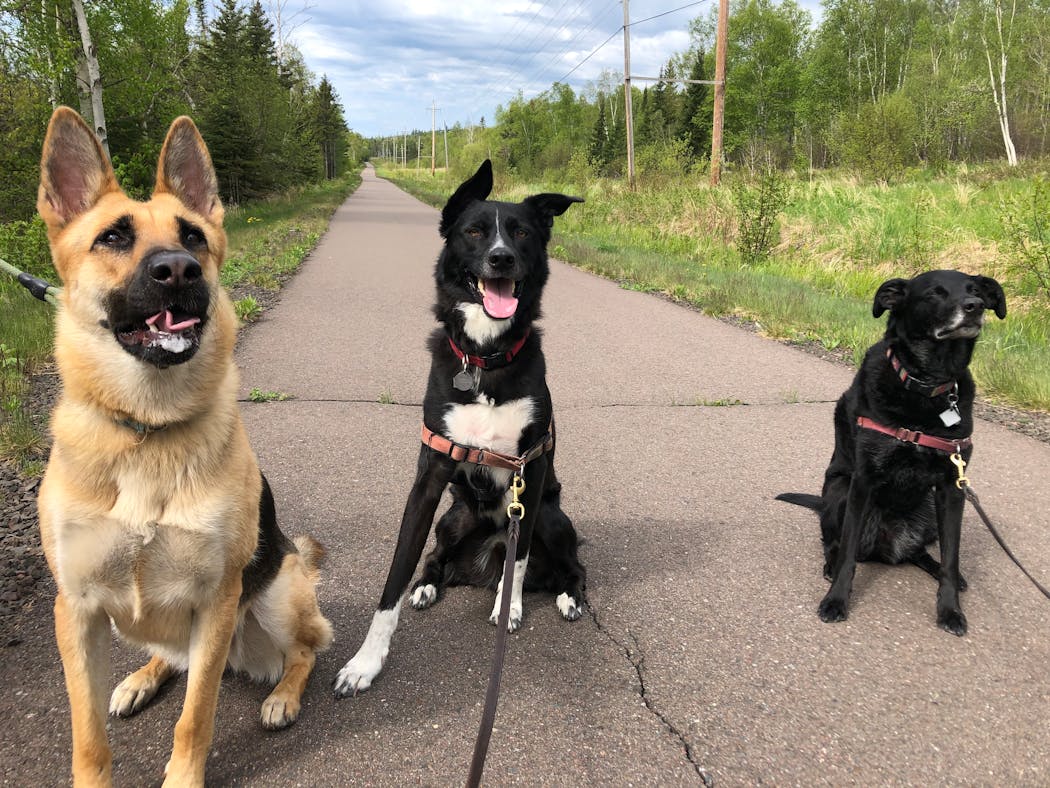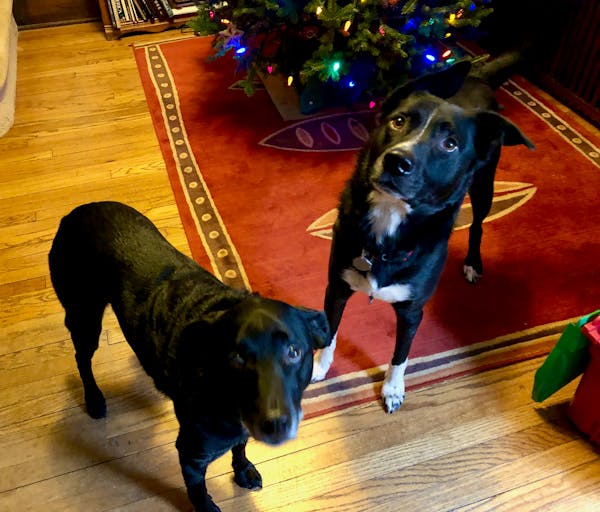When we saw the bear, I have to admit, I thought we were done for.
No, I didn't think the bear was going to hurt us. It was a young, skinny black bear, likely a yearling, and it glided out of the woods about 100 feet in front of us as we walked the dogs along a quiet road up the North Shore.
I knew the bear was no danger. But I did think that once Angus saw it he would never get over it and the rest of our vacation would be ruined. Angus, after all, is a dog that requires a muzzle and medication for a routine vet checkup — and it still takes him two weeks to calm down afterward.
He's a dog that can get so wound up at the sight of a rabbit that he is anxious and whining for the rest of the walk. A bear? What would an encounter with a bear do to him?
My husband, Doug, and I had gone Up North for a couple of weeks in June to stay in a rented cabin with 4½-year-old Angus, our 10-year-old Lab mix Rosie, and our friend Erik and his German shepherd, Angie.
Because I am a fretter, and because Angus is such a reactive dog, I worried endlessly about the trip beforehand.
I worried about Angus tolerating his crate in the back of the car for five hours — we hadn't taken him anywhere other than the vet since COVID hit. I worried that Angus would not remember Erik or Angie, even though he just saw them last fall. I worried that Angus — such a creature of habit and routine — would be so out of his element in a new place that he would be a nervous wreck.
Oh my gosh. I could have saved myself the worry.
Rosie and Angus were absolutely silent in the car the whole way to Lutsen, hopping out at rest and water stops, and hopping back in again as though they were just as eager to get there as we were.
Angus and Angie let out shrill barks of love when they saw each other again and immediately began playing. (Rosie, on the other hand, made it clear that she would have preferred that Angie not be there.)
And in the cabin, Angus made himself at home immediately, claiming the blue upholstered chair next to a window. If one of us sat in it, he would stare at us, and if we didn't move he'd bat at us with his huge clown-shoe paw until we did. Once settled, he stared out at the lake, or slept.
About halfway through the two weeks I realized that not only was I thoroughly and completely relaxed, but Angus was, too. Without stressors, there is no stress. There were no UPS trucks rattling past the cabin, no mail carriers walking up to the front door and stuffing god-knows-what through the slot. No other dogs prancing past the house, or barking at him from their own yards. No skateboarders.
This, I thought, is the dog that Angus could be — the dog he would be, if he weren't so plagued with anxiety. This is the dog that we are working to uncover, through training and patience and medication.
And then we saw the bear.
The bear moved up the road toward us as the dogs barked and leapt; I had to hand Angus' leash to Doug because I didn't think I could hold him. The bear paid us no mind. It turned and headed down the driveway that led to our cabin.
We stood on the road, uncertain, before finally heading down the driveway ourselves. The dogs were on high, high alert, sniffing the foliage and the ground and staring off into the trees, but the bear, apparently, had moved on.
Back inside the cabin, Angus calmed down immediately. He yawned — not a stress yawn, but a sleepy yawn. He hopped up onto his blue upholstered chair, looked out at the lake for a minute, and then he went to sleep.
Laurie Hertzel is the books editor at the Star Tribune. She has been writing about her reactive rescue dog, Angus, since adopting him in 2017. Follow along at startribune.com/puppy.

The 5 best things our food writers ate this week

A Minnesota field guide to snow shovels: Which one's best?

Summer Camp Guide: Find your best ones here

Lowertown St. Paul losing another restaurant as Dark Horse announces closing




